Local Author Captures Bunny Mellon’s Legacy
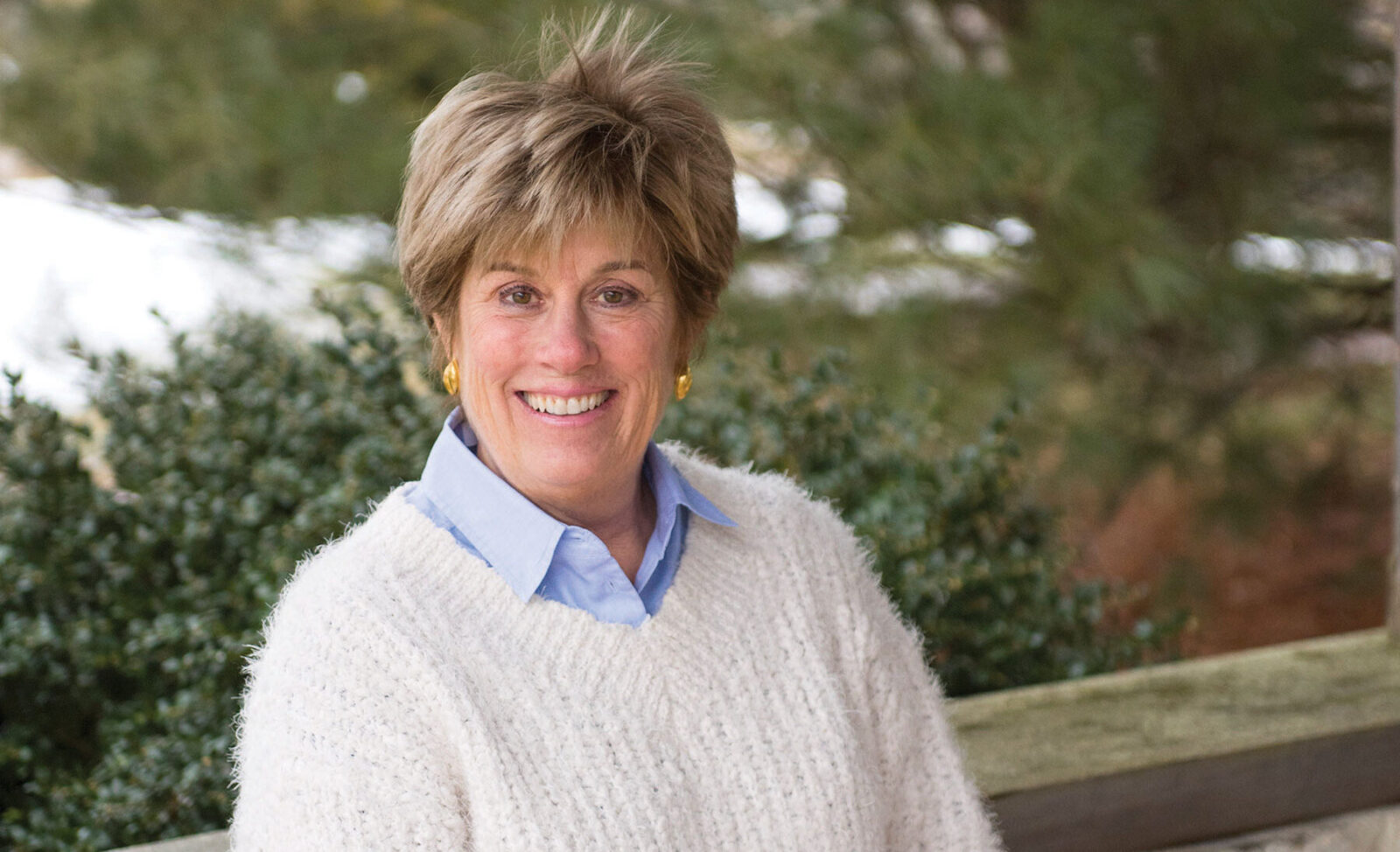
Written by Shayda Windle
White House garden historian Linda Jane Holden learned of Rachel “Bunny” Mellon during her time as a staffer in the Reagan administration. A lifelong garden enthusiast, Holden befriended White House gardener Irvin Williams, who shared stories of how the gardens evolved. A central figure in these stories was the fascinating Bunny Mellon, a good friend of the Kennedys who redesigned the East and Rose Gardens.
Holden spent days admiring the gardens and discussing the history behind them with Williams. She enjoyed “the mix of seasonal plantings, the diamond-shaped patterns of the santolina, and the way the boxwood wound like a shiny green ribbon through the tapestry of flowers,” she says. “As those gardens grew, so did my admiration for Mrs. Mellon.”
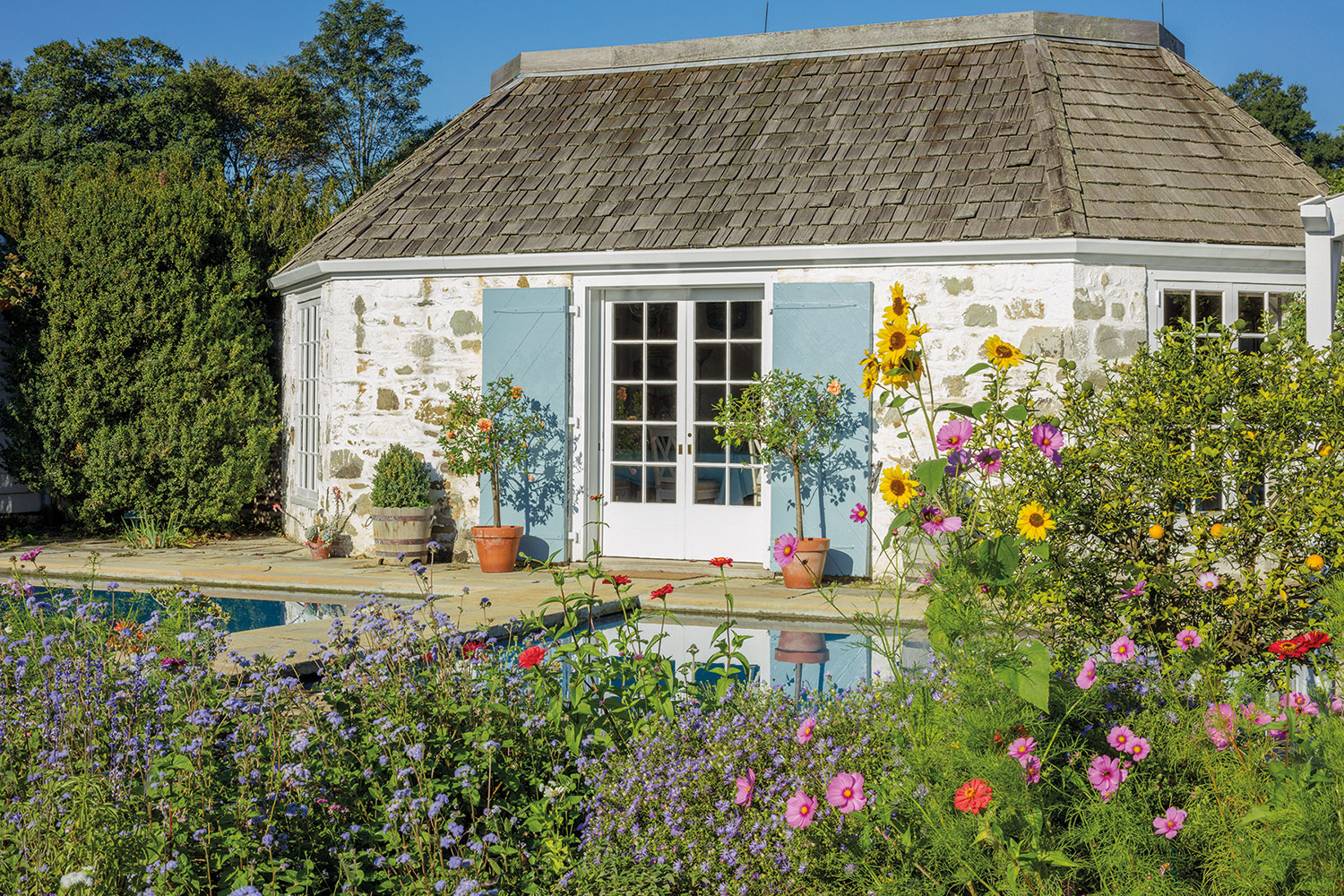
Oak Spring. Courtesy of Roger Foley.
Her admiration led her to contact Mrs. Mellon’s Oak Spring estate in Upperville, Va. in 2009 for permission to research the Rose Garden archives. To her amazement, Mrs. Mellon’s staff not only gave her permission, but arranged a meeting between Holden and the icon of American horticulture.
“I was in shock,” she says. “Mrs. Mellon wanted to meet me and [I] wasn’t sure what to expect. She was, of course, the kindest, most warm soul you could imagine, and straightaway, said to me, ‘Linda, you worked in the White House. Which president did you work for?’ I knew she was friends with the Kennedys, so somewhat nervously responded that I had worked under Reagan. To my surprise, she clasped my hand with a smile and said, ‘Oh! Ronnie was my second favorite president and Jack was my first!’” Holden quickly breathed a sigh of relief and they moved into a deep discussion about gardening — with “Mrs. Mellon doing most of the talking,” she says.
This encounter with Mrs. Mellon “became the first of many visits to her library — a magical place filled with her hand-chosen collection of rare books, manuscripts, paintings, and many other objects of art.” Holden was so fascinated with Mrs. Mellon’s contributions to horticulture that she published her first book, “The Gardens of Bunny Mellon,” in 2018, which details some of Mrs. Mellon’s most important work, including her role in the White House gardens.
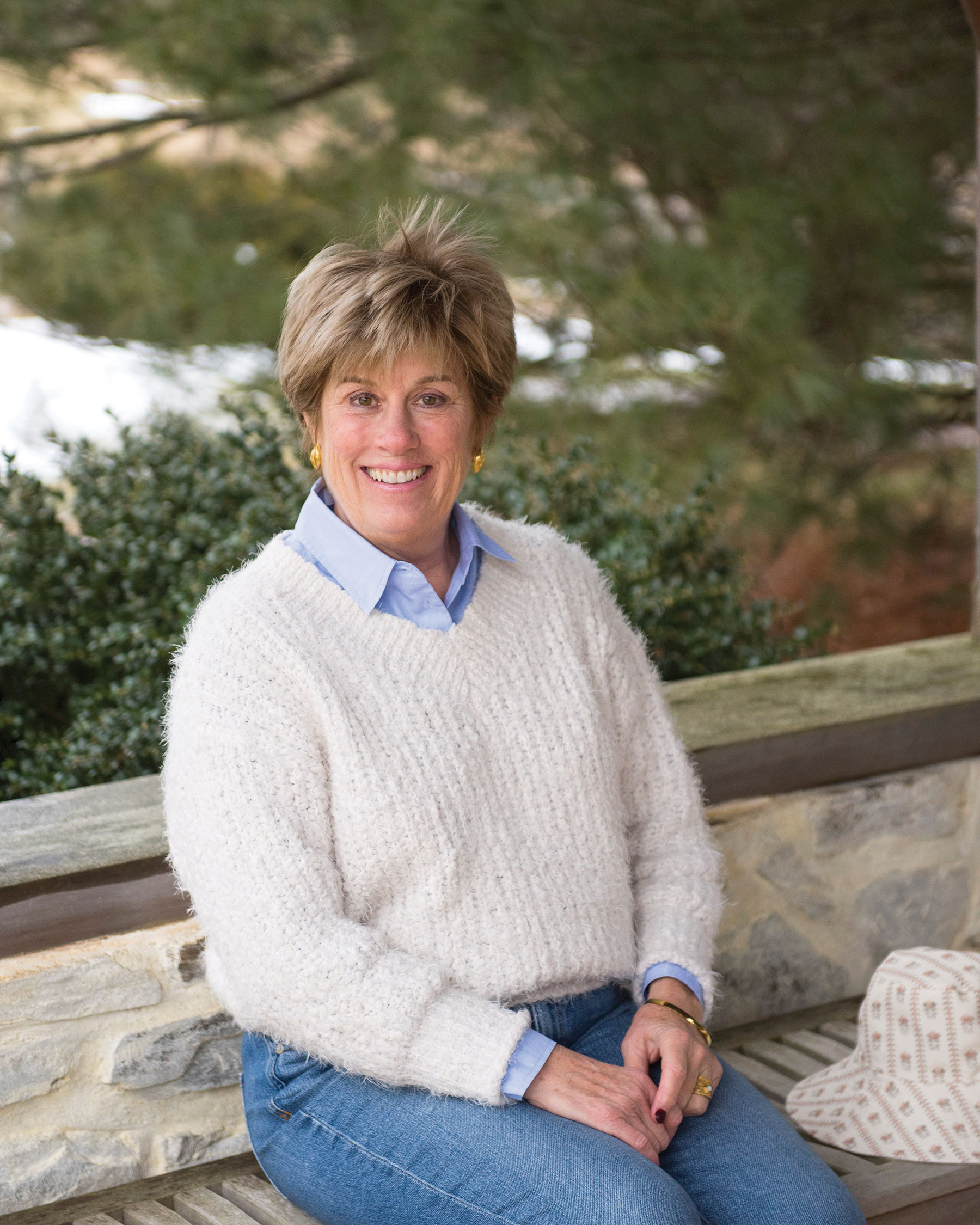
Linda Holden. Photo by Joanne Maisano.
Mrs. Mellon, wife of philanthropist Paul Mellon, was an heiress to the Listerine fortune, a self-taught gardener, horticulturist, and designer. Of all these things, however, she is most known and revered for her brilliance in garden design, a talent nurtured by her father from a young age.
“Bunny’s earliest memory of the outside world was of a garden,” Holden writes in “The Gardens of Bunny Mellon.” “[Bunny] recalls … ‘being very small near a bed of white phlox in my godmother’s garden. This towering forest of scent and white flowers was the beginning of ceaseless interest, passion, and pleasure in gardens and books.’” And ceaseless it was. Throughout her life, Mrs. Mellon designed gardens for all of her family’s properties, which included estates in Antigua, Paris, New York, as well as her primary residence in Upperville, Virginia.
The book describes how Mrs. Mellon was already designing gardens for “wealthy and influential patrons” by the time she reached her twenties. An affluent socialite, her inner circle of friends included politicians, celebrities, and other elite members of society, including the Kennedys. Her impeccable taste was recognized even by the tastemakers: she designed the gardens at both the Paris home and the château of her close friend, the couturier Hubert de Givenchy.
The assignment she was most known for was her redesign of the White House gardens. Inspired by his visit to the Gardens of Versailles, President John F. Kennedy decided that he wanted a White House garden that would “position the United States in a positive light on the world stage,” Holden writes in “The Gardens of Bunny Mellon.” “He wanted an American garden, open, and expansive, designed for function and beauty in the traditions established by two of America’s founding fathers — Washington and Jefferson.” In the summer of 1961 during a picnic in Cape Cod, JFK asked Mrs. Mellon if she would spearhead the redesign.
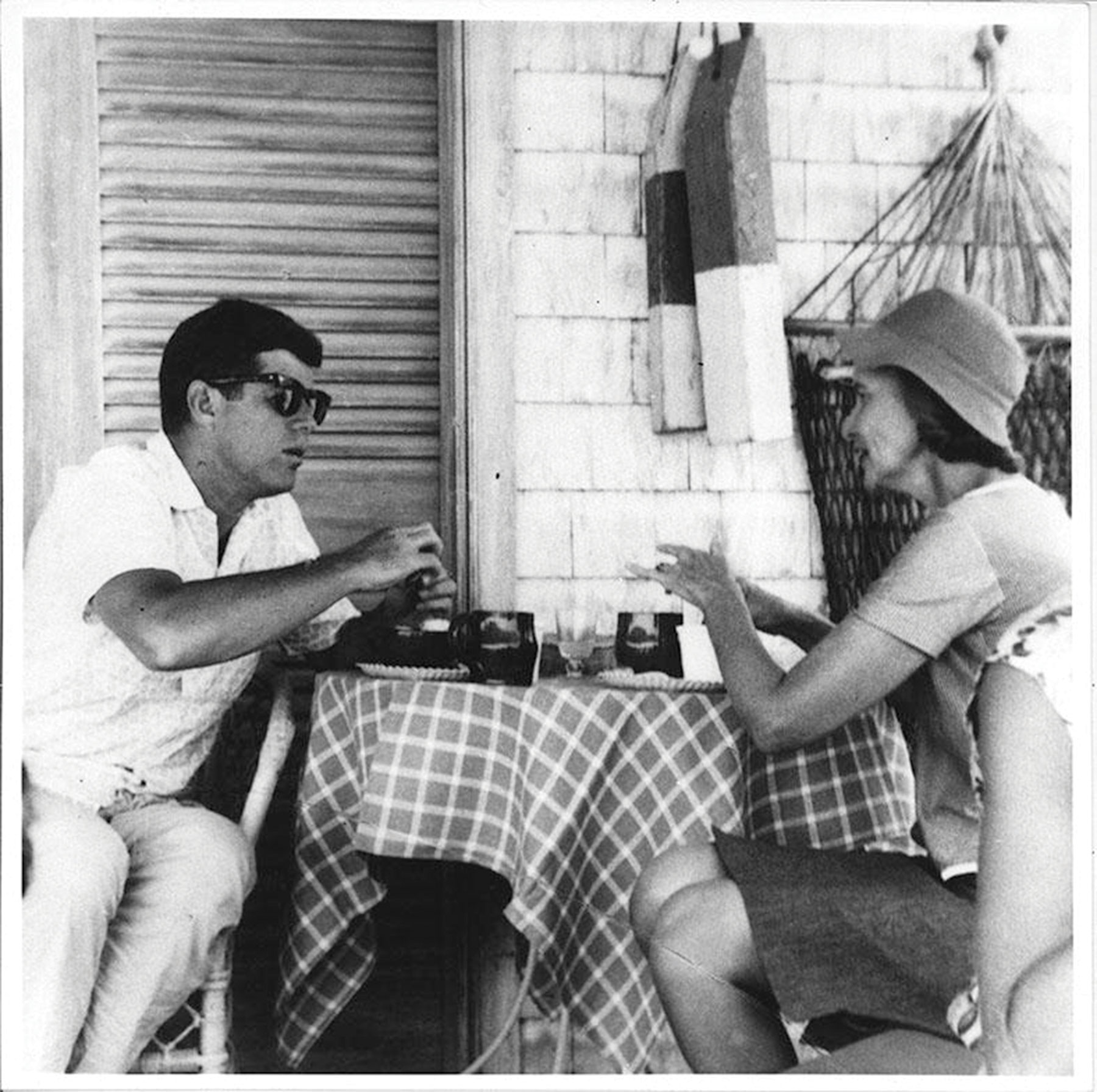
JFK and Mrs. Mellon discussing the redesign in Cape Cod. Courtesy of Sotheby’s.
The President wanted a stately backdrop, a sweeping lawn flanked by colorful flowers, suited for gatherings of a thousand people. Mrs. Mellon was enthusiastic but unsure she was up to the task, until spotting magnolia trees in front of the Frick Collection. She immediately knew that they would form the cornerstones of the design, and soon presented JFK with sketches and plans for the gardens that took into account “climate, exposure to sunlight, the dimensions of the space, and how much time could be given to maintenance when it was finished.”
Holden amusingly relays how Mrs. Mellon and White House gardener Irvin Williams subverted the National Park Service in order to carry out her vision, secretly widening the garden by eighteen inches one day while the “G men” were at lunch and having unapproved trees delivered in “the dead of night.” JFK was so pleased with the Rose Garden that he asked Mrs. Mellon to redesign the East Garden as a sanctuary for the First Lady and their family. He would not live to see it completed.
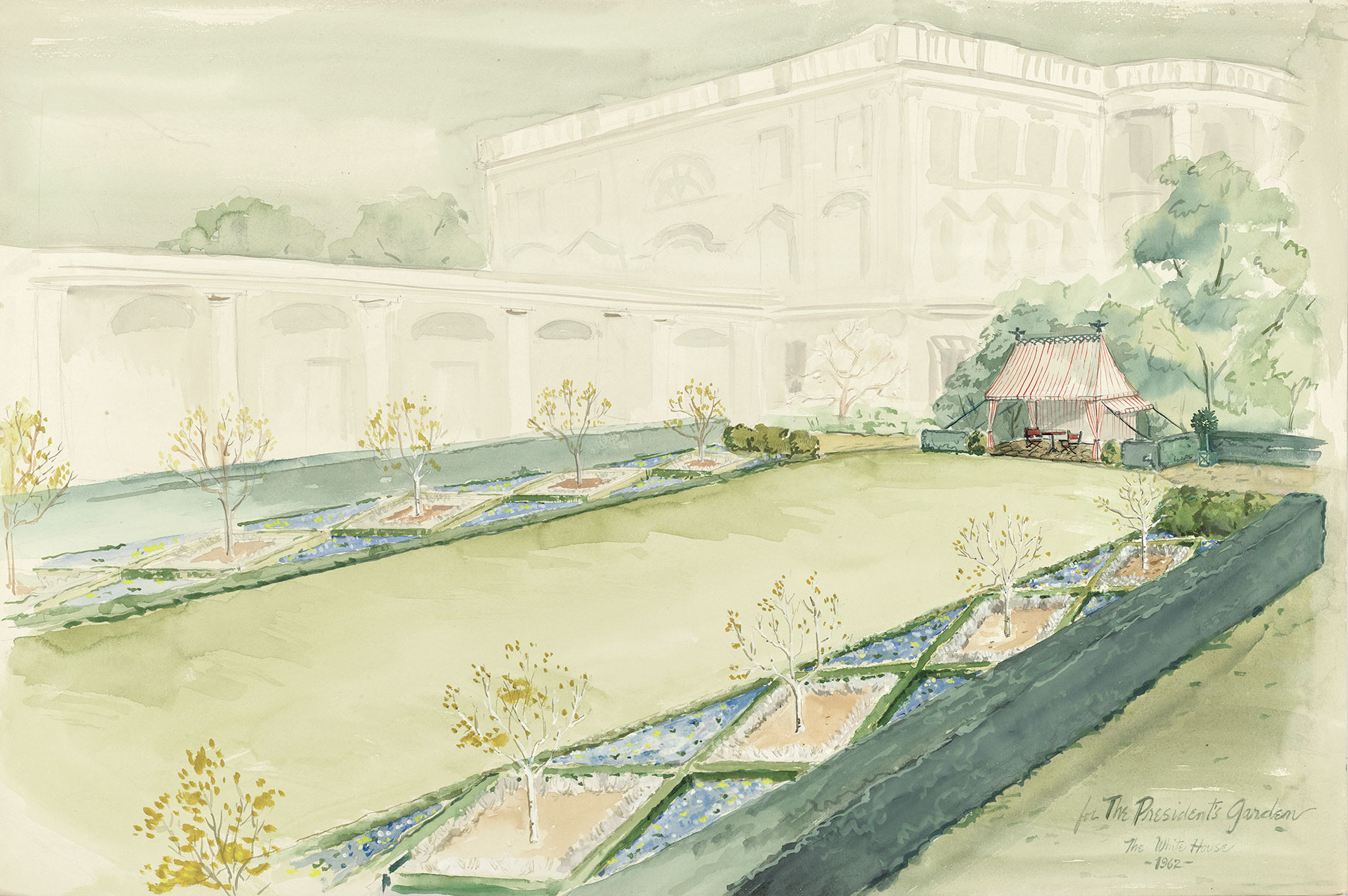
Bunny’s watercolor sketch of the Rose Garden. Courtesy of the Gerard B. Lambert Foundation and the Oak Spring Garden Library.
Mrs. Mellon was in Antigua when JFK was assassinated. She was summoned home by Mrs. Kennedy, who requested that she arrange the flowers for the Capitol, the church, and the cemetery. For his grave, Mrs. Kennedy asked for “a straw basket with just the flowers he had in the Rose Garden. Only those flowers, and nothing else.” Mrs. Mellon was enlisted to complete the redesign of the East Garden by Lady Bird Johnson, who “reviewed lovingly every detail of the story of the Rose Garden” and wanted “excellence to be applauded and preserved.” She later designed the landscape at JFK’s gravesite and the grounds of the John F. Kennedy Presidential Library in Boston.
Mrs. Mellon passed away in 2014, but her legacy survives in the Oak Spring Library, which she established to preserve and share her extensive collection of books and other artifacts on plants, gardens, and landscapes. Despite her love of books, Mrs. Mellon never wrote one of her own. She once journaled, “I want to write a garden book but haven’t had time. It would be short. A few suggestions that would encourage beginners and a few warnings not to overdo.”
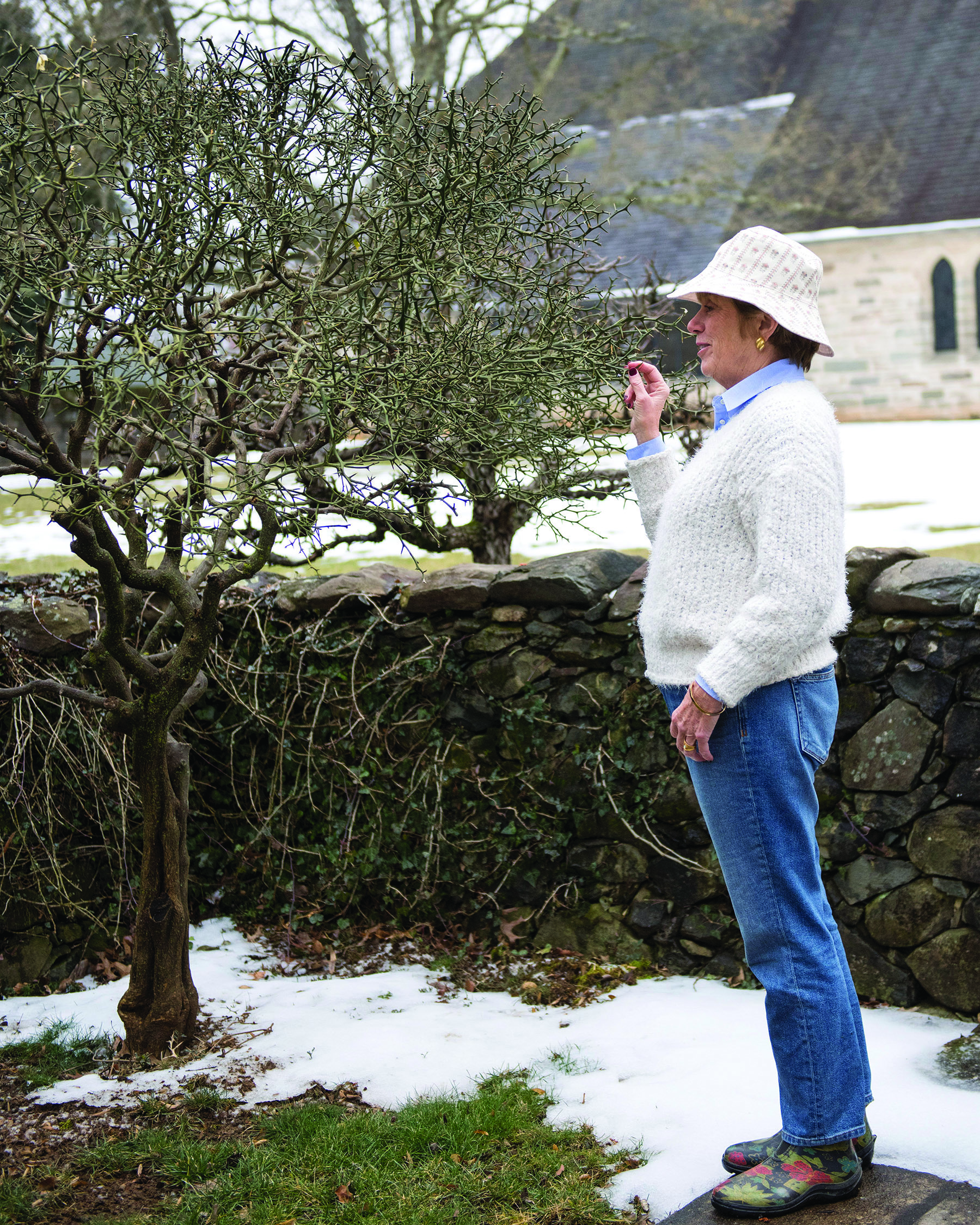
Linda Holden with a hearty orange tree at the Trinity Church designed by Bunny Mellon in Upperville, Va. Photo by Joanne Maisano.
Last fall, Holden released her second book, “Garden Secrets of Bunny Mellon,” a guide for beginner gardeners in the timeless aesthetic of Bunny Mellon. Admirers of Mrs. Mellon’s work will be happy to hear that Holden is working on her third book, “Bunny Mellon Style,” available for pre-order now on Amazon. “Bunny Mellon Style” gives readers a look inside her exquisite style, including the family homes she designed, so they get a “flavor of her collaborations with French designers of fashion and jewelry, and begin to understand her vast and lasting influence on the world of design.”
Holden is hosting a two-day book signing at Crème de la Crème in Middleburg, where visitors may purchase copies of “The Gardens of Bunny Mellon,” “Garden Secrets of Bunny Mellon,” and the Bunny Mellon Garden Journal, a beautiful notebook for journalists and garden designers that includes inspirational quotes and sketches from Mrs. Mellon. The book signing will take place during Historic Garden Week from April 23–24 between 11 a.m. and 4 p.m. Stop by for a chance to meet the author and purchase her books in person. ML
Published in the March 2021 issue of Middleburg Life.


